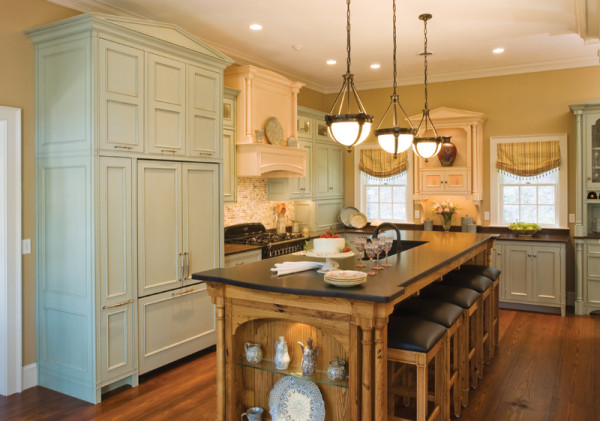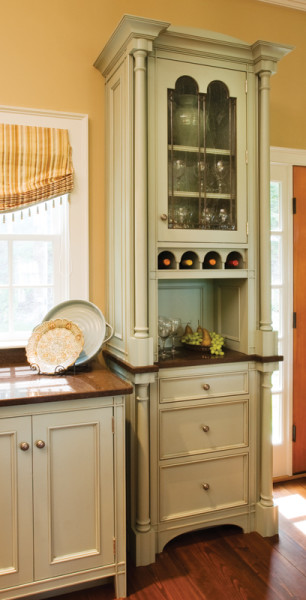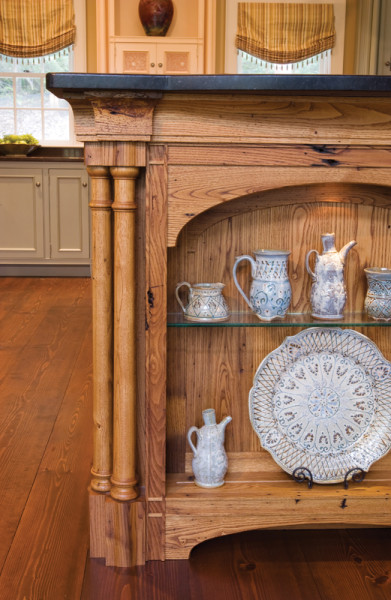
The refrigerator cabinet, incorporating a pantry, looks like a large armoire. Above the fridge are pantry pullout units that make deep, high storage accessible.
If you owned a premier company specializing in period-inspired cabinets, what would your kitchen look like? How about this: “A design aesthetic inspired by the classical vocabulary of ancient Roman architecture—more specifically, by the Swedish neoclassical movement —but with an updated sensibility.” The kitchen belongs to Crown Point Cabinetry founder Brian Stowell and his wife, Becky. Quoted above is the company’s product designer, Fred Puksta, who explains that the Stowell kitchen became a vehicle for development of the company’s patented new channel stock face frame.

The tall, freestanding wine cabinet features a leaded-glass door and Crown Point’s arched wine nooks.
“While typical face frames in the industry are rectangular in cross-section, with a flat face,” Stowell explains, “Fred introduced a new face-frame element with a cross-section in the shape of a C—channel stock.” This innovation became a foundational element for several new offerings from the company, including their Neoclassical, Prairie, and Classical Metropolitan lines.
The house in Quechee, Vermont, is a Greek Revival-style Cape design/build from Connor Homes. But the architectural kitchen was designed by Puksta. “I wanted the cabinetry to mimic a cityscape that might be found in Rome, Florence, or Venice,” says Puksta. “So I varied the heights and depths of the cabinets and used crown moldings, pediments, and arches. Different colors and finishes enhance the composition of individual ‘buildings’ in the landscape.”
Three-dimensional cabinet frame members produce decorative parallel lines that intersect at the corners to form squares. In the base cabinets, this channel frame stock concludes at the floor in a delicately tapered leg. The channel-stock corner posts present each cabinet as a piece of unfitted furniture, recalling old European kitchens.

The chestnut island has illuminated, open-end niches for display.
The Stowells (who share the house with 13-year-old twins) prefer an uncluttered appearance, which suggested the garages for counter appliances. At the same time, open cabinets display dishware and tone down the formality of the space Cabinet finishes are custom-blended paint colors (a blue-green and a creamy yellow) with a conversion varnish finish that was glazed and baked.
The island was designed as a piece of antique furniture: it’s reclaimed wormy chestnut resawn from old beams. A countertop of Cambrian granite was “antiqued” to a semi-porous matte finish that Puksta says has nearly the feel of leather. Flooring is old-growth, longleaf heart pine, finished with Carlisle’s “gingerbread” stain and four coats of high-resin tung oil. “Board widths are 7″, 9″, 11″, even 13″,” marvels Brian Stowell.







